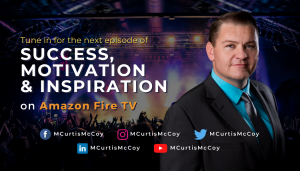Understanding trauma responses are essential and knowing that trauma is a deeply distressing or disturbing experience that leaves a profound impact on our minds, emotions, and even our physical bodies. For many women recovering from verbal, emotional, or physical abuse, understanding the mechanisms of trauma can be a vital step in the healing journey. One critical aspect of this understanding involves recognizing and working through our innate trauma responses: fight, flight, freeze, and fawn.
These responses are natural reactions to perceived danger, rooted in the brain’s attempt to protect us from harm. However, when trauma goes unresolved, these responses can linger, influencing our behavior and relationships in ways we may not fully understand. This article delves deep into each trauma response, helping you recognize how they manifest and offering actionable steps for healing.
What Are Trauma Responses?
At their core, trauma responses are survival mechanisms. They originate in the amygdala, the part of the brain responsible for detecting threats and activating the body’s fight-or-flight response. When faced with danger, your body releases stress hormones like adrenaline and cortisol, preparing you to act quickly.
In healthy circumstances, these responses are short-lived. Once the threat passes, the body returns to a state of calm. However, for those who have experienced prolonged or severe trauma, the brain can become “stuck” in these survival states, even when the danger is no longer present. This can lead to behaviors and reactions that feel automatic and out of your control.
The Four Trauma Responses
1. Fight Response
The fight response emerges when you perceive that confronting the threat directly is the best way to ensure safety. In a healthy form, this response can look like setting boundaries, standing up for yourself, or asserting your needs. However, when this response is overactive due to trauma, it may manifest as:
- Anger or aggression: Lashing out verbally or physically.
- Control issues: Feeling a need to dominate situations or people.
- Perfectionism: Striving for unattainable standards as a way to feel safe.
Signs You Might Be Stuck in Fight Mode:
- Frequent feelings of frustration or irritability.
- A tendency to argue or become defensive.
- Difficulty trusting others and a need to “win” in interactions.
Healing the Fight Response:
- Practice mindfulness: Grounding techniques like deep breathing can help calm the body’s heightened state of alertness.
- Channel energy constructively: Physical activities like kickboxing, dancing, or running can provide an outlet for pent-up aggression.
- Set healthy boundaries: Learn to assert yourself in ways that honor both your needs and others’ feelings.
2. Flight Response
The flight response involves escaping or avoiding danger. While this response can be lifesaving, trauma can cause it to persist long after the threat has disappeared. Over time, it might show up as:
- Overworking: Constantly staying busy to avoid confronting painful emotions.
- Anxiety: Feeling a pervasive sense of unease or panic.
- Avoidance behaviors: Dodging certain people, places, or situations that remind you of the trauma.
Signs You Might Be Stuck in Flight Mode:
- Difficulty relaxing or “sitting still.”
- An overwhelming need to control your environment to feel safe.
- Avoiding emotional intimacy or difficult conversations.
Healing the Flight Response:
- Slow down intentionally: Incorporate relaxation techniques like yoga or meditation into your daily routine.
- Face avoidance gently: Start with small steps to confront the things you’ve been avoiding, celebrating each victory.
- Seek support: Therapy can help you unpack the fears driving your flight response and develop healthier coping strategies.
3. Freeze Response
The freeze response occurs when neither fighting nor fleeing feels possible. Instead, you may feel paralyzed or “stuck.” This response can manifest as:
- Dissociation: Feeling disconnected from your body or surroundings.
- Procrastination: Struggling to take action, even on tasks you consider important.
- Numbness: Suppressing emotions to the point of feeling nothing.
Signs You Might Be Stuck in Freeze Mode:
- Difficulty making decisions or taking initiative.
- A sense of being “frozen” in time, unable to move forward.
- Emotional detachment from yourself or others.
Healing the Freeze Response:
- Reconnect with your body: Practices like grounding exercises, tai chi, or gentle stretching can help you reestablish a sense of presence.
- Break tasks into small steps: Overcoming paralysis starts with taking one tiny action at a time.
Build a routine: Structure can create a sense of safety and momentum
4. Fawn Response
The fawn response involves placating others to avoid conflict or danger. Often rooted in people-pleasing behaviors, it develops when you’ve learned to prioritize others’ needs over your own as a survival strategy. Signs include:
- Difficulty saying no: Agreeing to things you don’t want to do.
- Over-apologizing: Taking responsibility for things that aren’t your fault.
- Losing your identity: Suppressing your own needs, desires, or opinions to keep the peace.
Signs You Might Be Stuck in Fawn Mode:
- Constantly seeking approval or validation.
- Feeling exhausted from overextending yourself for others.
- Struggling with self-worth or a lack of boundaries.
Healing the Fawn Response:
- Practice self-advocacy: Start small by expressing your preferences in low-stakes situations.
- Set boundaries: Learn to say no without guilt, and remind yourself that your needs are valid.
- Focus on self-care: Prioritize activities that nurture your well-being and reinforce your sense of identity.
The Long-Term Effects of Trauma Responses
When unaddressed, chronic reliance on these trauma responses can lead to a range of emotional and physical challenges, including:
- Anxiety and depression.
- Chronic stress or fatigue.
- Strained relationships.
- A diminished sense of self-worth.
Recognizing these patterns in your own life is a powerful step toward healing. It’s important to approach yourself with compassion and remember that these responses developed as a way to protect you. They’re not weaknesses but rather signs of your resilience.
Steps to Heal and Move Forward
Healing from trauma is a journey, and it often requires a combination of self-awareness, professional support, and consistent self-care. Here are some practical steps to help you move forward: https://www.alignable.com/waco-tx/healing-hearts-coaching
- Educate Yourself:
- Learning about trauma and its effects can demystify your experiences and reduce feelings of shame or isolation.
- Seek Professional Help:
- Therapies like EMDR (Eye Movement Desensitization and Reprocessing) or somatic experiencing can help address the root causes of trauma responses.
- Build a Support Network:
- Surround yourself with people who uplift and validate you. Consider joining support groups for individuals with similar experiences.
- Practice Self-Compassion:
- Treat yourself with kindness and patience. Celebrate small victories and remind yourself that healing takes time.
- Develop Mindfulness Practices:
- Techniques like meditation, journaling, or breathwork can help you stay grounded and present.
- Prioritize Self-Care:
- Focus on activities that nourish your body, mind, and spirit. Whether it’s spending time in nature, creating art, or enjoying a good book, make time for what brings you joy.
- Identify and Reframe Negative Beliefs:
- Work on challenging thoughts like “I’m not good enough” or “I’ll never be safe.” Replace them with affirmations that reflect your inherent worth and strength.
Conclusion
Understanding your trauma responses is a profound act of self-awareness and empowerment. By recognizing how fight, flight, freeze, and fawn behaviors have shaped your life, you can begin to reclaim your sense of agency and move toward healing. Remember, the journey is not about perfection but progress. Each step you take toward understanding and nurturing yourself is a victory worth celebrating. If you would like to connect and begin healing reach out to me, I would love to help you. https://tonnilea.com/
You are resilient, capable, and deserving of a life filled with peace and joy. Healing is possible, and you are not alone on this path.




